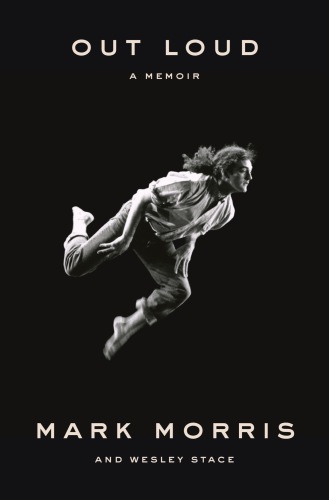
Out Loud
A Memoir
کتاب های مرتبط
- اطلاعات
- نقد و بررسی
- دیدگاه کاربران
نقد و بررسی

July 15, 2019
Choreographer Morris recalls his dance career in this candid memoir. Born in Seattle, Wash., in 1956, Morris writes that by age 11, “dancing was already all that mattered.” After high school, he traveled to Europe, where he performed ballet in Madrid and came out to his mother in an aerogram that read: “I am gay!” After moving New York, he and a group of friends formed the Mark Morris Dance Group in 1980. A New Yorker article boosted his notoriety and, in 1988, Morris was hired as the director of dance at the royal theatre in Brussels. Unimpressed with the Belgians, and outspoken as ever, he referred to Belgian culture in the press as “racist, sexist, homophobic,” and nearly lost his job for it. Coauthored by novelist Stace (Wonderkid), who ably captures the subject’s lively personality, Morris recalls his artistic achievements—including founding the White Oak Dance Project with Mikhail Baryshnikov in 1990 and the Mark Morris Dance Center in 2001—and discusses his eclectic influences (televangelist faith healers, “hillbilly music”). Morris is an astute and witty storyteller, as he shares opinions on everything from popular music (it’s “numbing”) to houseguests (“If you want to stay with me, you have to sleep with me”). Fans of modern dance are sure to enjoy this colorful, often humorous memoir.

July 15, 2019
A celebrated American choreographer looks back on his life. "I can be demanding, even mean," admits Morris, a boss so tough that members of his company once staged "a power coup, an organized boycott" to voice their grievances. Yet he is supportive of talent he admires. Readers see both sides of him in this memoir, co-written by musician and novelist Stace (Wonderkid, 2015, etc.). Morris begins with his Seattle childhood, when he would wedge his feet into Tupperware juice glasses to imitate older sister Marianne, who took ballet, "by walking on pointe in the front room." From there, the author describes his early years in New York, his male lovers, his stint as Director of Dance at the Théâtre Royal de la Monnaie in Brussels, and his creation of some of the finest modern dances of the past 40 years, including Dido and Aeneas. Morris devotes much of the book to taking pot shots at people who have wronged him. He names a ballet teacher from his first days in New York and writes, "I couldn't stand her," but he doesn't say why. As a young dancer, he studied with a dance company "run by a creep called Charles Bennett." Derek Walcott, who wrote the libretto for the Paul Simon musical The Capeman, which Morris choreographed, was "ham-fisted, bigoted, lecherous"; he "started as an asshole, ended as a monster, and finally disowned the whole thing." Some of this opprobrium may be deserved, but the cumulative effect feels petty. Morris is equally generous with praise, however, as when he refers to the "founding women--the goddesses, the pillars" of the Mark Morris Dance Group. He also describes the geneses of his major dances and offers laudatory anecdotes about such collaborators as Yo-Yo Ma, Mikhail Baryshnikov, Lou Harrison, and others. Morris once described his philosophy of dance as, "I make it up and you watch it. End of philosophy." That philosophy yielded marvelous results. If only the book contained more dance and less score-settling. An uneven, sometimes bitter, yet always revealing portrait of one of America's most innovative artists.
COPYRIGHT(2019) Kirkus Reviews, ALL RIGHTS RESERVED.

August 16, 2019
Morris, founder of Mark Morris Dance Group (MMDG), continues to have a vibrant dance presence, with new choreography that debuted in July and revivals performed throughout the world. Like his dance philosophy ("I make it up and you watch it"), here Morris, and novelist-musician Stace (Wonderkid; Misfortune) are forthright, often funny, and unafraid to ruffle feathers, slotting gossipy tidbits next to soul-searching revelations and philosophical discussions on the nature of dance. Frequent personal photos add interest. The subjects of Morris's disses include himself ("vulgar," "mean," "a bully,"), as well as lovers, dance associates, and choreographers ("a creep," "a tin ear," "ham-fisted"). Morris bounces from grateful to arrogant and back again, exploring his childhood, his sexuality, the inside scoop on MMDG past and present, and dance and choreography in general. VERDICT "Why the hell not?" was Morris's guide in more than one situation. A must for dance libraries, and why the hell not for most public libraries. [See Prepub Alert, 4/8/19.]--Maggie Knapp, Trinity Valley Sch., Fort Worth, TX
Copyright 2019 Library Journal, LLC Used with permission.

October 15, 2019
A reporter once asked Mark Morris about his philosophy of dance and he answered: I make it up and you watch. End of philosophy. There's a similar vibe to this memoir: Morris is frank, joyful, and, at times, provocative, but he never pontificates. As one of the most original and innovative choreographers in modern dance, he lets his work speak for itself. He relates his life story simply and honestly and never seems to take himself too seriously. With a dance background comprised of many different styles (he danced with the companies of Eliot Feld and Lar Lubovitch as well as the Koleda Balkan Dance Ensemble) and an ear for a variety of musical traditions, he creates dances that defy categorization. He has collaborated with notables like Mikhail Baryshnikov (White Oak Dance Project), Yo Yo Ma (Falling Down Stairs), and Paul Simon (The Capeman) and now directs operas as well as his own company, the Mark Morris Dance Group. A fascinating memoir that will engage anyone interested in dance, movement, or the creative process.(Reprinted with permission of Booklist, copyright 2019, American Library Association.)

























دیدگاه کاربران